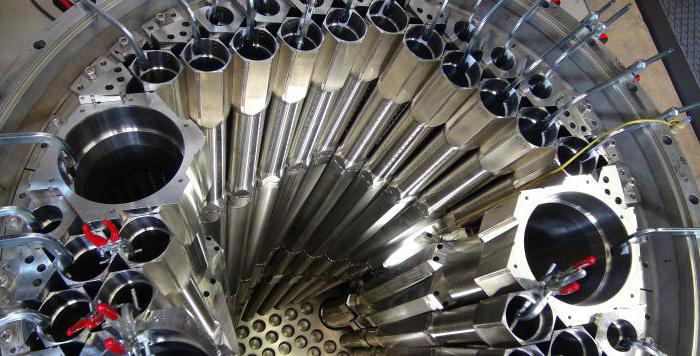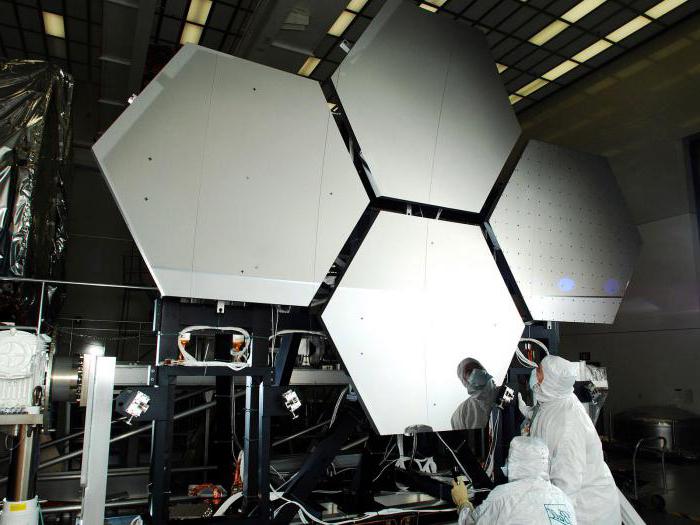Beryllium is an element of the second group of the 2nd period of the periodic table, having atomic number 4 and denoted by the symbol Be. It is highly toxic and has many specific properties that have led to its widespread use in many fields. And now we will talk about both the characteristics of this element and its use.
Physical properties
This substance looks like a light gray metal. It is relatively solid, with a Mohs score of 5.5. This means that it can only be damaged with effort, and only with something sharp. It is one of the hardest metals in its pure form. According to this indicator, iridium, osmium, tungsten and uranium are ahead of it.
The following physical characteristics can be distinguished:
- Density - 1,848 g / cm³.
- The molar volume is 5.0 cm³ / mol.
- The melting and boiling points are 1278 ° C and 2970 ° C, respectively.
- Molar specific heat is 16.44 J / (K • mol).
- The specific heat of melting and evaporation is 12.21 and 309 kJ / mol, respectively.
This metal also has a high modulus of elasticity of 300 GPa. Even in steels, this figure is 200-210 GPa. While in the air, it is actively coated with a resistant film of atmospheric BeO oxide. It is also worth noting that beryllium has a very high speed of sound. It is 12 600 m / s. And this is two to three times higher than in other metals.
Fragility
Despite its impressive hardness, beryllium is a very brittle metal. Most likely, this quality is associated with the presence of oxygen in it. But this feature is easily eliminated. Beryllium is sent to a vacuum for remelting. A deoxidizer (titanium, for example) is necessarily involved in this process. The result is a strong metal with sufficient ductility.
Also, beryllium fragility is a feature associated with the propagation of cracks in single crystals. Given this fact, it is possible to increase the ductility of the metal through processing that reduces the grain size and prevents their growth. This property of beryllium is always eliminated, because it makes it extremely poorly welded and soldered. By the way, fragility can also increase - just add a little selenium to the metal (non-metal, chalcogen).
Chemical features
This metal, in a number of its properties, is similar to aluminum - this can be traced even in the equations of beryllium reactions, which, by the way, are very specific. At room temperature, the metal has a low reactivity, and in a compact form does not interact even with water and steam.
It oxidizes with air to a temperature of 600 ° C. When this indicator is exceeded, reactions with halogens become possible. But to interact with chalcogenes, even higher temperatures are needed. With ammonia, for example, beryllium can only react if it is above 1200 ° C. As a result, nitride Be 3 N 2 is formed . But the powder of this substance burns with an impressive bright flame. And at the same time nitride and oxide are formed.
Be (OH) 2
This is beryllium hydroxide. Under normal conditions, it looks like a gel-like substance of white color, which almost does not dissolve in water. But then this process successfully occurs when it enters the diluted mineral acid. Here, by the way, is the reaction of sulfuric acid and beryllium hydroxide according to the formula: Be (OH) 2 + H 2 SO 4 → BeSO 4 + 2H 2 O. As a result, as you can see, salt and water are formed. The oxide also interacts with alkalis. It looks like this: Be (OH) 2 + 2NaOH → Na 2 Be (OH) 4 .
Another interesting reaction occurs when exposed to temperature. If you increase the indicator to 140 ° C, then the substance decomposes into oxide and water: Be (OH) 2 → BeO + H 2 O. By the way, hydroxide is obtained by treating beryllium salts, which occurs either with the participation of alkali metals or during hydrolysis of sodium . Also, metal phosphide may be involved in this process.
Beso4
This is beryllium sulfate. This substance is a white solid crystals. It is obtained as a result of the interaction of sulfuric acid and any beryllium salt in water. The process is accompanied by evaporation and subsequent crystallization of the resulting product. If the hydrate is heated to 400 ° C, then it will turn out to decompose it into H 2 O and anhydrous salt. BeSO 4 had a very specific application. It was mixed with radium sulfate (an inorganic substance of an alkaline earth radioactive metal) and used in atomic reactors as a source of neutrons. Today it is often used in this form of alternative medicine, such as homeopathy.
Be (NO3) 2
This is beryllium nitrate. It is the middle salt of this metal and nitric acid. This compound can exist only as crystalline hydrates of various compositions. Anhydrous nitrates simply do not exist. Due to the addition of concentrated nitric acid, it is possible to isolate beryllium tetrahydrate from an aqueous solution. The formula is as follows: Be (NO 3 ) 2 • 4H 2 O. Interestingly, the crystals of this substance spread out in air. And as a result of reactions carried out in a solution with a 54% content of nitric acid, trihydrate can form. Also, with the participation of these substances, dihydrate can be formed.

Nitrate of this metal used to be actively used in the production of caps of the so-called gas-burning lamps. It was ideally suited for this, because it could thermally decompose, forming oxide. But then electric lighting began to spread everywhere, and this technology has sunk into oblivion, as well as the use of nitrate. It, by the way, is toxic, like any other beryllium compounds. Moreover, even in small quantities, this substance is an irritant that provokes acute pneumonia.
Metal production
In industry, beryllium is an actively used metal that needs to be produced in large quantities. Therefore, the most operational method is used. It consists in the processing of beryl (mineral, ring silicate) into sulfate or hydroxide of this element. Beryllium metal is produced by reducing BeF 2 fluoride with magnesium. This process is carried out at a temperature of 900–1300 ° C or another method — electrolysis of BeCl 2 chloride. Sodium chloride (NaCl) is involved in this reaction, and everything happens at a temperature of 350 ° C.
The resulting substance is sent for distillation in a vacuum. The result of this process is high purity metal.
Metal production
In this area, a chemical element such as beryllium is actively used. He is an effective alloying supplement. Beryllium is included in alloys in order to increase their strength and hardness. With the presence of this metal, they also acquire corrosion resistance. Products made from alloys with beryllium are very durable and durable. Which for example? A striking example is spring contacts. Only 0.5% of this metal is enough to add to the bronze from which they are made. The springs are strong and remain elastic up to the temperature of red heat. They, unlike products from any other alloy, withstand billions of cycles of enormous load.
Aerospace technology
In the manufacture of guidance systems and heat shields, no other structural metal acts like beryllium. He has no equal in this area. This metal is added to structural materials so that they gain lightness and at the same time receive increased resistance to high temperatures and strength. Such alloys are obtained one and a half times lighter than aluminum and stronger.

Even in the structure of aerospace engineering, beryllides are used, which are intermetallic compounds of this substance with other metals. They are very hard, have a low specific gravity and amazing resistance to temperature. Therefore, beryllides are used to make skin for aircraft and missiles, and they are used in the production of engines, guidance systems, and brakes. Even titanium alloys in terms of quality lose to these substances. By the way, a considerable number of beryllides are characterized by specific nuclear characteristics. That is why they are still used in nuclear energy (do neutron reflectors, for example).
Other applications
In addition to the above, beryllium (more precisely, its aluminate) is also used in the production of solid-state emitters. Fuel containing this substance has also been identified. They are less toxic and cheaper than everyone else. In particular, rocket fuel with beryllium hydride was discovered. It is important to note that the beryllium oxide already mentioned is the most thermally conductive of all existing. Therefore, it is used as a high temperature insulator and resistant refractory material.
And beryllium is a popular substance for the manufacture of electrodynamic speakers. After all, it is solid and light. That's just because of the fragility, expensive processing and toxicity of the dynamics with this metal is used only in professional audio systems. And some manufacturers, in order to improve their sales performance, claim the use of this metal in their technology, even if it is not.